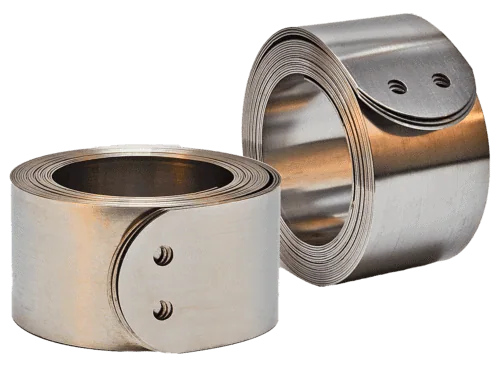Crucial Components
Selecting the right mechanical components for your application is crucial. Among the various options available, constant force springs stand out for their unique properties, versatility, and benefits. They are a type of extension spring that does not obey Hooke’s law, maintaining a constant force even when deflected. Let’s delve into the advantages of a constant force spring mechanism and why they might be the perfect choice for your application.
About Constant Force Springs
There are many constant force spring benefits due to their superior spring properties. In the form of a tightly wound roll of strip spring material, they are more compact and lighter than most other methods as a balancing mechanism. This eliminates the need for deadweights, linkages, cylinders, and other systems.
Constant Force Spring Benefits
- Small Space Requirements
Their design allows tight coiling, making them an excellent choice for devices with limited space.
- Smooth Range of Motion
The nearly flat force curve ensures a consistent force throughout their extension. This provides a smooth and reliable range of motion, essential for applications requiring precision and stability.
- No Inertia to Overcome
Unlike traditional springs, they do not have significant inertia to overcome at the beginning of their movement. This makes them ideal for applications that require immediate and responsive action.
- Easy Mounting to Existing Hardware
Versatile and easily integrated into existing hardware setups. This flexibility simplifies the design process and can reduce manufacturing time and costs.
- Counterbalance Effect
Useful in applications where a constant load needs to be counterbalanced, such as in retractable mechanisms or adjustable systems.
Versatile Applications
Constant force spring benefits make them suitable for a wide range of applications, including:
- Surgical Devices: Enhancing precision and control in medical instruments.
- Aircraft Doors: Used in a “gang” arrangement, i.e. side by side in a multi-spring assembly. This allows for hundreds of pounds of counterbalance force to be available to assist in opening & closing the main entry door/stairs, or cargo doors.
- Windows: Providing a counterbalance for smooth opening and closing operations.
- Fire Dampers: Supply steady and consistent force, and well-suited for the certain opening and closing actions needed in fire dampers.
- Gym Equipment: Replace the need for weights in gym equipment using the force of the springs to act the weight. 50 pounds of force in a lightweight spring is then 50 pounds of weight saved, making the equipment lightweight and more compact.
- Electric Motors: The springs allow the motor to run efficiently without arcing or other gaps in power. As the commutator turns, the brushes become worn over time due to friction. The springs ensure proper contact force against the commutator as they wear.
Consider Constant Force Springs for Your Next Project
Considering these springs for your application? It’s important to work closely with a trusted manufacturer to ensure the best design and implementation. John Evans’ Sons, a leader in constant force spring manufacturing, offers extensive selection charts and technical information to help you choose the right spring for your needs.
We produce reliable, powerful springs and spring-based assemblies for industries including medical, aerospace, robotics, trucking, and window manufacturing. Our extensive in-house capabilities allow us to make various spring types and customized solutions to meet diverse needs.
Contact John Evans’ Sons
Already know what you need? Reach out to John Evans’ Sons for expert assistance in selecting and implementing the perfect constant force spring for your application. Their expertise and high-quality products can help ensure the success of your project.
Contact Us Today!
"*" indicates required fields
